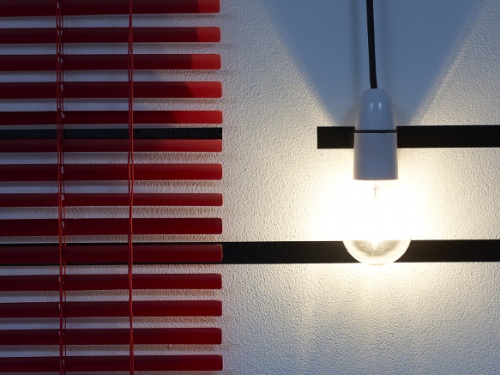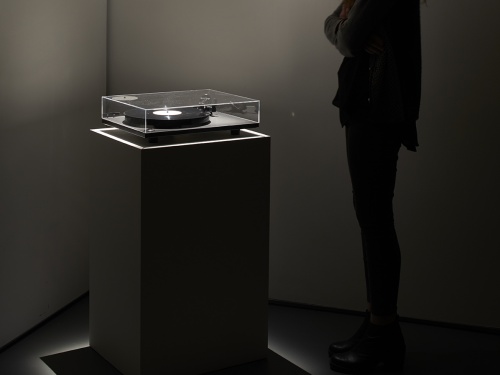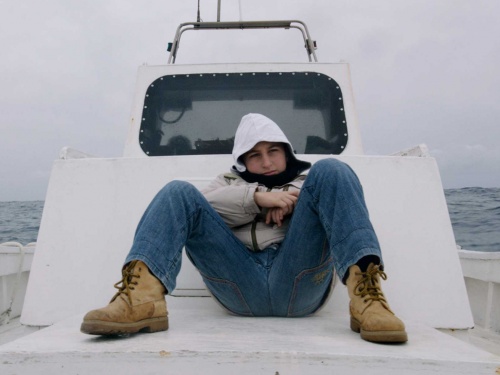Embracing the Unpredictable: 25 Weeks of fig-2
As fig-2 reaches its halfway point, writer Francesca Laura Cavallo reflects on the first 25 weeks of the project, exploring how its strength lies in its unpredictability.
In the overwhelming panorama of intellectually stimulating events in London and the inescapable FOMO that keeps us hooked, I am captured by the steady paced, weekly re-embodiment of the ICA Studio. I keep going back to fig-2, every Monday if I can, to find one more iteration of Fatos Ustek’s take on the London art scene.
We are halfway through the year-long venture and it is time for a recap. fig-2’s identity is hard to grasp and is still not entirely resolved. In this lies its exciting essence; the sense of incompleteness that encourages curiosity and intellectual speculation, the feeling that things are not so tightly controlled in their outcome, but put into action to reserve open possibilities of success. Is it not, after all, the true character of an experiment, to put ingredients together and see what emerges?
fig-2 is an experiment in exhibiting art that reflects a current preoccupation: stretching and deconstructing the exhibition format into performative, work-in-progress methods of cultural production.
If fig-1 was multidisciplinary in its programme, by alternating artists’ projects with interventions by architects Caruso St John’s and writer Will Self, fig-2 is cross-disciplinary in its nature; it says a good deal about how artists are working right now. Each project could be described as an encounter between art and other practices of cultural production, where the exhibition as a static constellation is constantly re-assessed to reincarnate into other forms of knowledge dissemination.
Week 15 was a three-dimensional expansion of the printed page in collaboration with The White Review, a project that highlighted the crossover of editorial and the curatorial practice. In week 19, Ruth Beale’s library for public democracy was a forum for discussion on how we transform the real, while week 22 hosted Marjolijn Dijkman’s LUNÄ Talks: Uncertainty Scenarios, a continuum of roundtable conversations on ideas of future. More traditional in their format, but nevertheless willing to be infiltrated by scientific research, were the works authored by David Cheeseman and Ole Hagen with the astrophysicist Roberto Trotta in week 20, and the psychic attempt to re-connect to the plastisphere enacted in Rot of the Stars (week 21).
All these works seem to be driven by a voracious appetite for knowledge and fluctuate between artistic and more pragmatic methods of investigation. In this regard, Suzanne Treister’s tarot cards epitomizes this concordia discors, linking archival research on 20th century human history and fortune-telling in visionary, almost psychedelic tableaux, where real events and inventories are matched with their representatives in tarot. A pragmatic, historical tarot reading of the upcoming years was the culmination of this unusual mash-up of psychics and historiography, bringing tarot back to its original function: providing metaphors to help individuals in making decisions.
The pervasive willingness to cross reference in fig-2 (echoing Ustek’s own background as a mathematician), not only relates to the project's multiform manifestations. It also carries an epistemological preoccupation. In the absence of a knowledge that is certain, art, science and speculation become tools for time travelling, instruments that induce a mental space, where everything can be envisioned and explored. A mental space that is also at the centre of Shezad Dawood’s short animation The Room (week 13): here, two hooded members of an unspecified brotherhood have gained access to an “elevated mental state” they call Shangri La, in a time travelling trip across mystic and pop symbolism.
Another prominent feature of the last 12 weeks at fig-2 is how the whole sequence has come across with a marked performative component: talks, roundtables, readings, musical improvisations, magic lantern projections, seminars, guided tours, breakfasts and exhibition openings did not just punctuate the progression of the events, but were often at the project’s core, whereby the exhibition space worked simultaneously as a container for the documentation and as a window into the genesis and development of the projects, in constant dialogue with the live event.
In particular, the interaction between the art object and performance art was at the core of both Jacopo Miliani’s installation; an attempt to pursue a choreographic score of an invisible performance, and the video and performance installation by Eva Rothschild and Joe Moran in collaboration with the annual performance festival Block Universe. Here, a video showing a body rolling down from a cliff (Joe Moran) was paired with Eva Rothchild’s recording of a group of children dismantling her sculptures: this juxtaposition built up to the performance which happened later in the week, almost like a prefiguration, a script for the live event, which consisted of sculptural response to Moran's choreography piece Singular.
If fig-2, has been able to play so freely with this unorthodoxy of mediums, the conspicuous, high profile, institutionalised patronage of Outset has corroborated this spontaneous, experimental character by supporting its independence from the art market and attempting to renegotiate the cultural value of art in a time where public funding is basically disappearing.
It is hard to tell how and if these projects will be redigested in the ever-changing art panorama, but it is quite clear that their performative nature serves more the purpose of the production and less the one of the display.
fig-2 is about influencing rather than acknowledging the art world. It facilitates encounters and discussions with an approach that institutions are now increasingly adopting (project rooms, film clubs and so on) but with a manoeuvrability that they can hardly afford: its compact scale is an opportunity rather than a weakness.
The sensation that new ideas and projects can be interrogated and tasted under the sunlight and not behind the curtains of some art-dealing elite, the understanding that the exhibition is not the final result, but a step in growing momentum, can be a disappointment for some, but also a true privilege to witness.
This strategy seems to respond to a desire for production of art that realises itself by being interrogated and questioned rather than admired. It is, after all, a curatorial choice that embraces openness and unpredictability, and that, due to the project’s sustained speed, has to privilege curiosity and instinct over self-reflexivity. ■
fig-2 will run for 50 weeks in the ICA studio, presenting a new project every week of 2015.
This article is posted in: Articles, Blog, Exhibitions, Members News
Tagged with: fig-2, Fatos Ustek, Francesca Laura Cavallo










